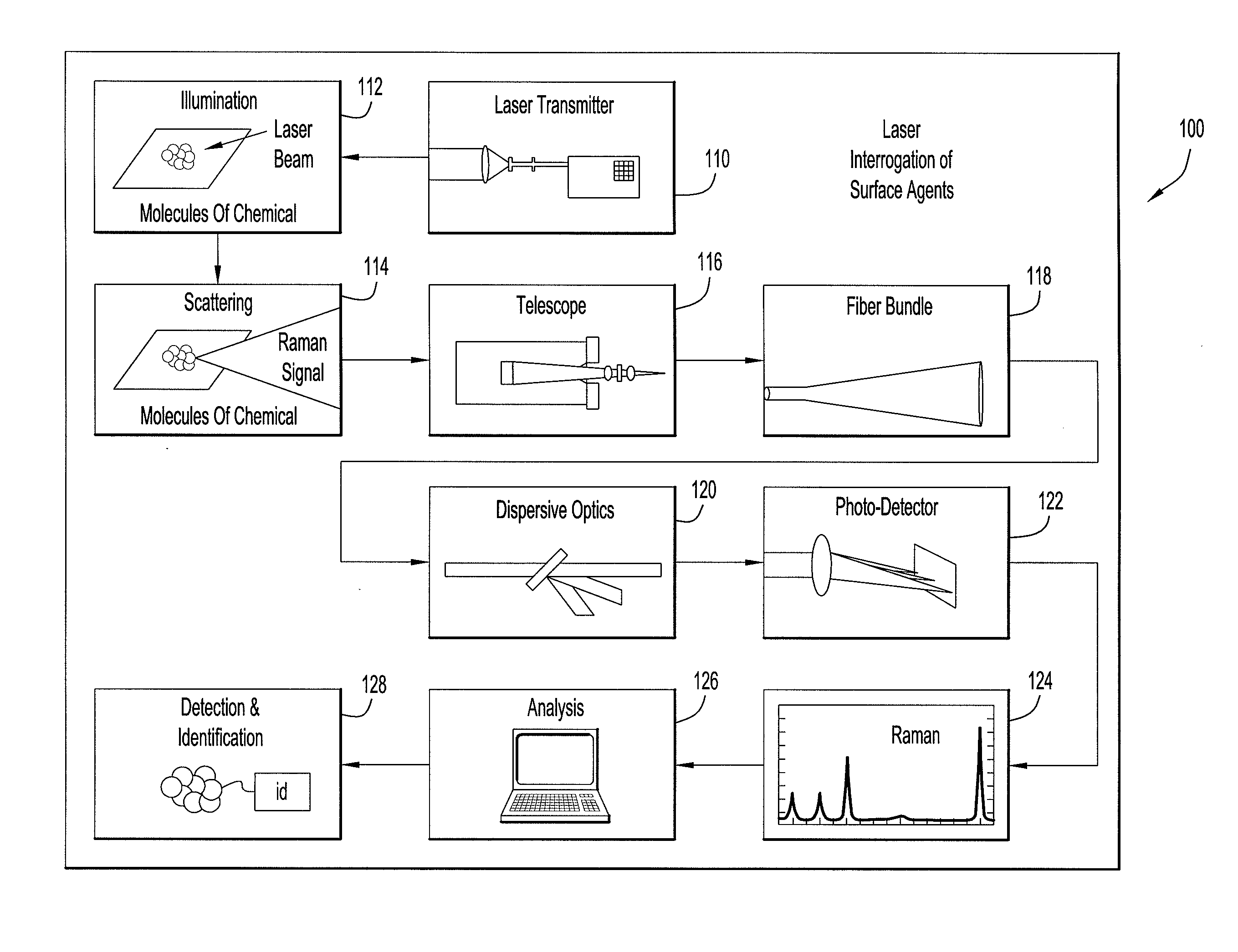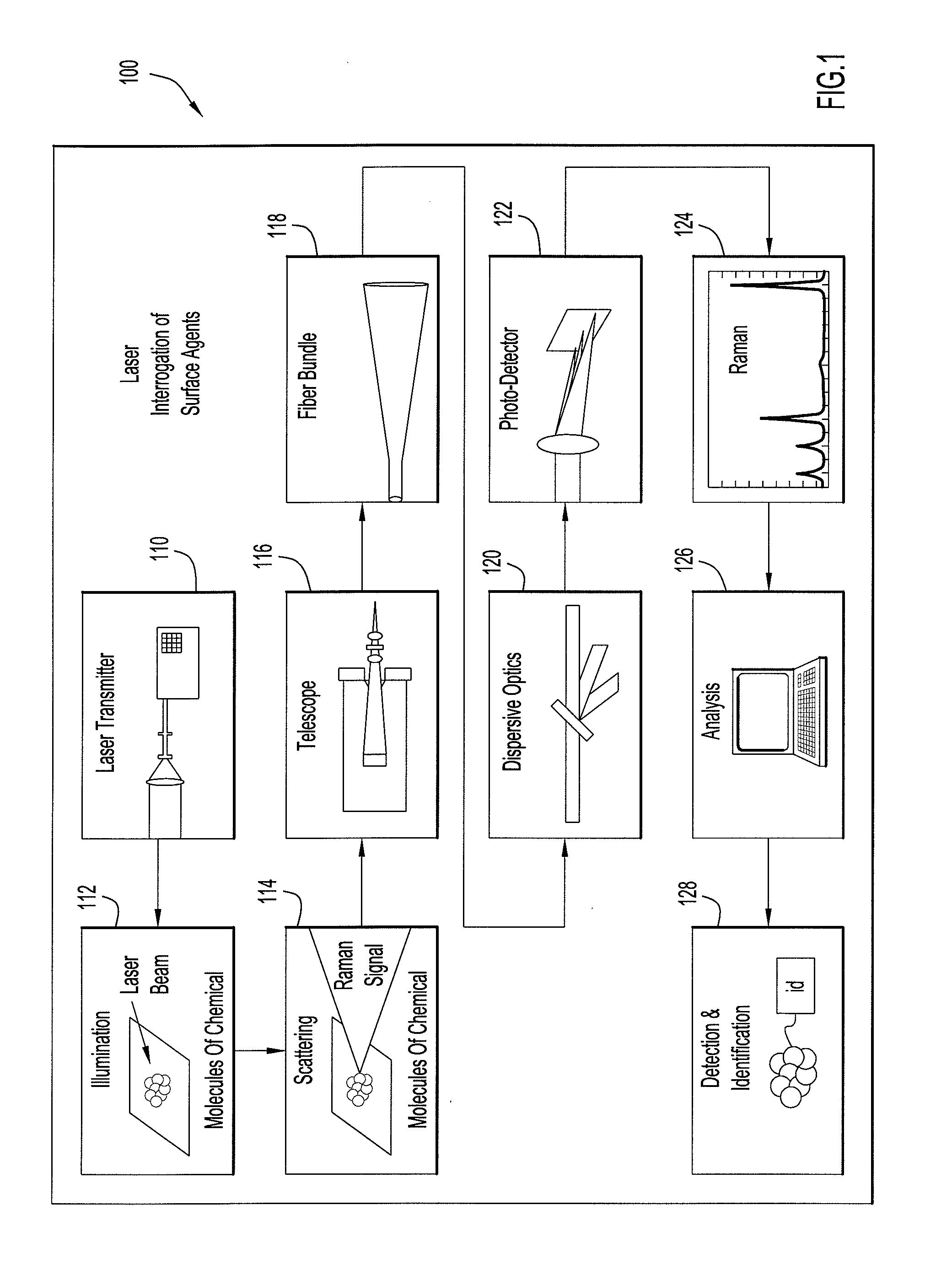Systems and Methods For Remote Unmanned Raman Spectroscopy
a technology of raman spectroscopy and remote unmanned spectroscopy, which is applied in the field oframan spectroscopy, can solve the problems of severe danger of exposure to chemical or biological agents, cumbersome process, and time-consuming process
- Summary
- Abstract
- Description
- Claims
- Application Information
AI Technical Summary
Benefits of technology
Problems solved by technology
Method used
Image
Examples
Embodiment Construction
[0035]FIG. 1 is a schematic functional diagram of a Raman spectrometry system 100 that may be employed with embodiments of the present invention. As shown, a laser transmitter 110 serves as a spectrally narrow light source with high irradiance. It illuminates a chemical agent deposited on a surface as indicted by functional block 112. A portion of the incident light is Raman scattered by the chemical compound, as indicated by functional block 114. This light is scattered in all spatial directions as well as shifted spectrally into several discrete wavelengths. These wavelength shifts correspond to the unique vibrational energies associated with the molecular bonds in the given chemical.
[0036]The Raman scattered light is collected by a telescope, block 116, and is coupled into a dispersive optical system. More specifically, a telescope focuses the collected light onto an optical fiber bundle 118. At the opposite end of the fiber bundle, individual fibers are oriented linearly to form...
PUM
 Login to View More
Login to View More Abstract
Description
Claims
Application Information
 Login to View More
Login to View More - R&D
- Intellectual Property
- Life Sciences
- Materials
- Tech Scout
- Unparalleled Data Quality
- Higher Quality Content
- 60% Fewer Hallucinations
Browse by: Latest US Patents, China's latest patents, Technical Efficacy Thesaurus, Application Domain, Technology Topic, Popular Technical Reports.
© 2025 PatSnap. All rights reserved.Legal|Privacy policy|Modern Slavery Act Transparency Statement|Sitemap|About US| Contact US: help@patsnap.com



